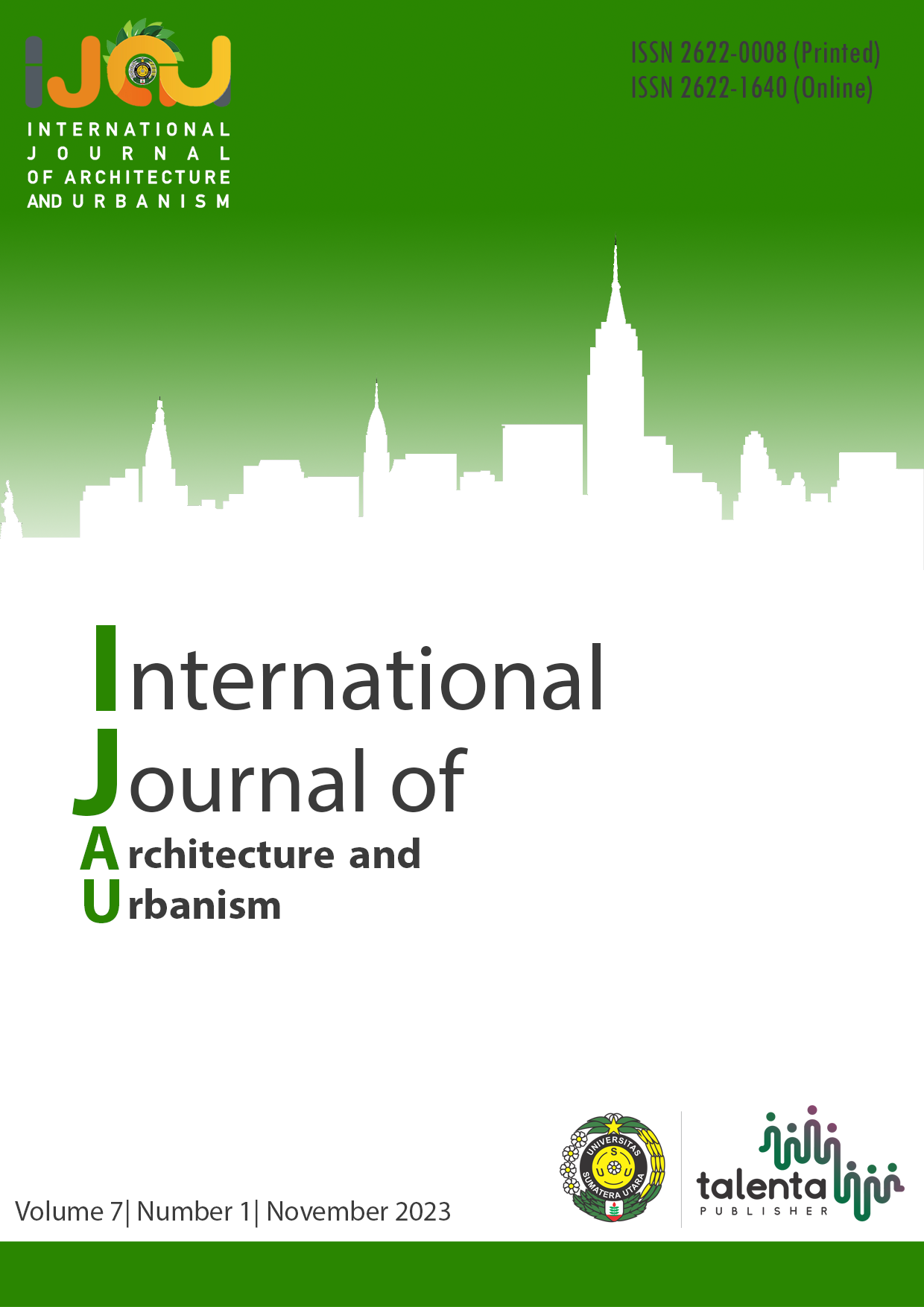Design of Ulos Weaving Handicraft Centre in Samosir Regency with Green Architecture Approach
DOI:
https://doi.org/10.32734/ijau.v7i1.11692Keywords:
crafts, green architecture, Samosir, UlosAbstract
Indonesia is famous for its rich culture, especially the traditional fabrics of each region. North Sumatra is one of the contributions to that cultural heritage. Weaving Ulos or 'Kain Ulos' is an ancestral cultural heritage that is a symbol of the Batak Toba community in the form of long scarves whose existence decreases dramatically and can experience extinction. The lack of a place or container to preserve Ulos is one of the issues to consider. The design of this ulos weaving craft center must pay attention to the facilities, design concepts, and application of green architecture to the building. The aim is to design suitable support facilities for ulos weaving craft centers, making the ulos weaving craft center as one of the containers to preserve ulos weaving to improve the economy of the surrounding community and apply green architecture to the design to preserve the surrounding environment as well. The process of design approach used in this design is qualitative descriptive. Method by analyzing data collected through field observations to the location of craft centers and literature studies. Energy savings become important points that will be applied to the design of the craft center, such as utilizing sunlight, rainwater and also minimizing artificial air conditioning. Samosir is a strategic and supportive location to apply a green architectural approach in the design of this craft center.
Downloads
Downloads
Published
How to Cite
Issue
Section
License
Copyright (c) 2023 International Journal of Architecture and Urbanism

This work is licensed under a Creative Commons Attribution-ShareAlike 4.0 International License.


.png)










